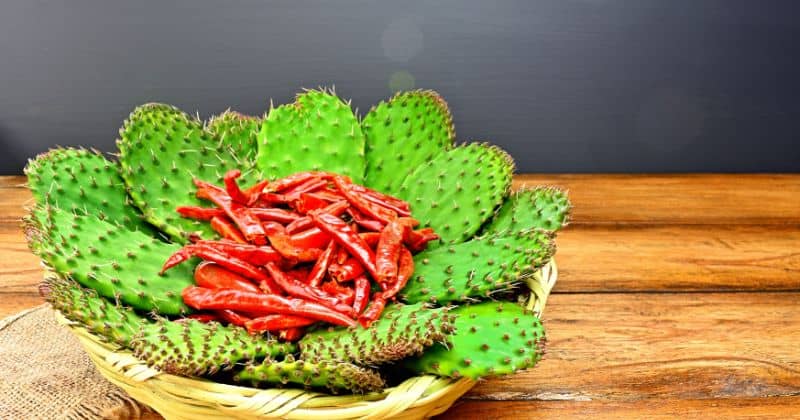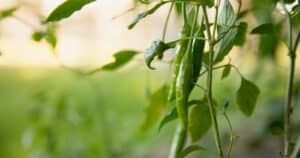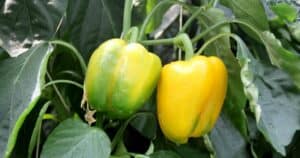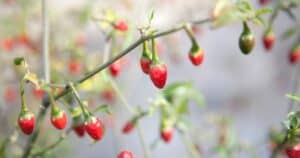If you want to experience the full heat and dynamic flavor of chile de arbol peppers, timing is everything. So when should you harvest these popular Mexican peppers?
The short answer is…once they turn a vibrant red color. (80 – 100 days) This indicates maximum ripeness and heat level.
In this growing guide, you’ll discover:
- The optimal time to pick chile de arbol based on color, texture and aroma
- How to grow a bountiful crop of peppers
- Storage tips to enjoy your harvest all season long
Chile de arbol offers an intensely hot, nutty, and smoky flavor that shines in salsas, tacos, soups and more. Follow these harvesting tips for peppers that pop with spicy flavor.
Let’s start by looking at what exactly makes the chile de arbol pepper special…
An Intro to Chile De Arbol Peppers
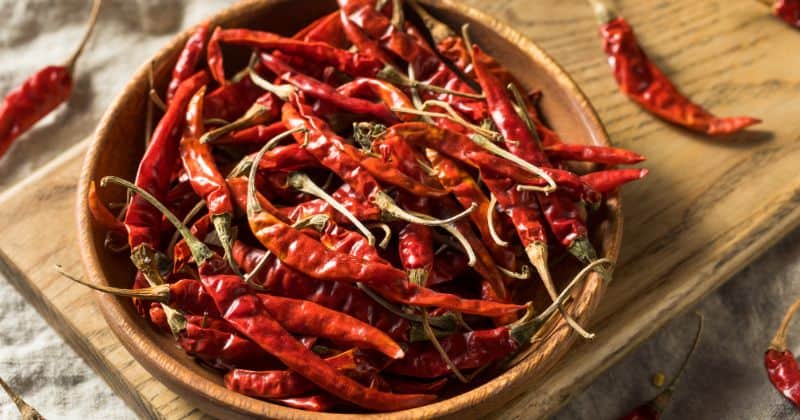
Also called “tree chili” in Spanish, chile de arbol is a slender chili pepper used widely in Mexican cuisines. It packs some serious heat, rating 15,000-30,000 Scoville units – about 3-6 times hotter than a jalapeño!
When fully ripe, these peppers turn a deep red color. Chile de arbol offers a complex, nutty flavor with hints of smoke and grass. It’s excellent for salsas, tacos, soups, stews, and more.
When Do Chile De Arbol Peppers Ripen?
Chile de arbol takes 80-100 days to fully ripen. There are a few signs your peppers are ready for harvesting:
- Peppers turn bright red, purple, yellow or brown
- Peppers feel firm and solid
- Stems appear dried out
- Fruity, aromatic smell
Harvesting Chile De Arbol at Different Stages
You can pick chile de arbol at various stages of ripeness:
Green Peppers
- Unripe with bitter, grassy flavor
- Minimal heat
Color Break
- Tangy, semi-sweet flavor
- Medium heat level
Fully Red
- Sweet and spicy
- Maximum heat!
Beyond Red
- Soft, pruney texture
- Deep, concentrated flavors
- Declining heat
For the best results, wait until peppers reach a vibrant red color before harvesting. Handle them gently using gloves to prevent skin irritation.
Growing a Bountiful Crop
Follow these tips for a prolific harvest:
- Plant in warm soil after spring’s last frost
- Use transplants to gain a few weeks head start
- Amend soil with compost or fertilizer
- Water 1-2 inches per week
- Place in sunny, warm spots
- Stake plants for added stability
- Control weeds and pests
Proper care can result in 50+ peppers per plant!
Storing Your Chile De Arbol Bounty
Extend the life of your fresh peppers with these storage methods:
- Refrigerate unwashed peppers in paper bags for 2-3 weeks
- Leave stems on and avoid overcrowding
- Freeze peppers in airtight containers for 4-6 months
- Pickle peppers in vinegar-filled jars
- Dehydrate peppers until crispy, then store in airtight containers
Enjoy your harvest all season long!
Hope this guide helps you determine the perfect time to pick your chile de arbol peppers. With the right growing conditions and harvesting timing, you’ll be rewarded with an abundance of flavorful, fiery peppers. Let us know if you have any other questions!

